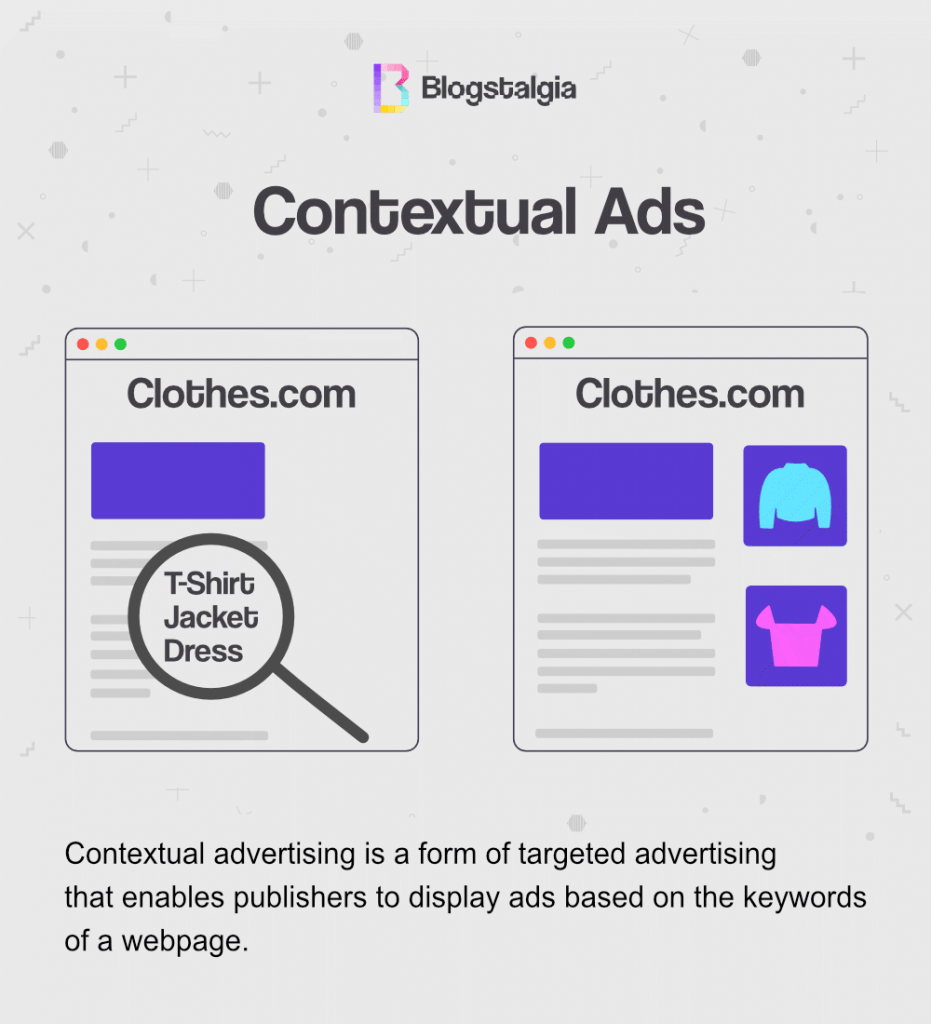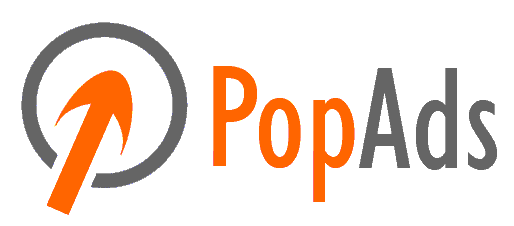He’s basically a giant banner.
All jokes aside, display ads are one of the most common ways bloggers monetize their sites.
In this article, we’ll go over how they work, which ones are the best ad networks for bloggers and publishers, and other FAQs about ads.
Contents
Disclosure: You should always assume that pretty much every link on this site is an affiliate link, and if you click it and buy something you like, I’ll earn some money to help me buy a DeLorean, build a time machine, and travel back to the 90s so I can watch Hey Arnold! and eat Dunkaroos again.
Online Advertising Pricing Models
Before you start looking at the best ad networks for bloggers, you must understand how the most common ad network pricing models work.
I know this might not sound super fun, but it’s important that you understand this if you want to get the most out of your ad network.
This is because the best type of advertising model for your blog depends on how much traffic you’re getting and how engaged your audience is.
CPM (Cost Per Mille – Cost per thousand impressions)
In case you’re curious, the M in CPM is the roman numeral for one thousand.
The CPM pricing model means that you get paid every time an ad is seen 1,000 times (1,000 impressions).
For example, if you charge a CPM of $20, that means that you’ll earn $20 for every 1,000 ads a visitor sees on your website.
CPM is great for website owners because you’re basically selling space and will get paid regardless of how well an ad performs.
CPV or PPV (Cost Per View or Pay Per View)
CPV means that you get paid each time an ad is displayed on your website.
The difference between CPV and CPM is that for CPV you get paid for each individual view, not every 1,000 views.
Both CPV and CPM are great for advertisers who just want to increase brand awareness and don’t need the visitor to click the ad to buy a product or service.
CPC (Cost Per Click or Pay Per Click)
The CPC price, also known as PPC (pay per click), is the amount you get paid every time a visitor clicks an ad on your site.
This is the most commonly used ad pricing model and it’s best for bloggers who have a super-engaged audience.
This is the type of pricing model platforms like Google AdSense and AdBrite use.
Using clicks is great for advertisers as they can measure how well their ads are performing.
A downside of this is that it requires a bit of optimization work from the website or the ad network to generate the most revenue possible.
You can expect CPCs to be anywhere between $1-5 depending on how everything is optimized.
CPA (Cost Per Acquisition)
CPA means that you only get paid if the person who clicks the ad buys the product or service.
Not many sites will take CPA ads as they might be a little risky.
The good thing about this one is that advertisers are willing to give you a higher commission if the click results in a sale.
So you might end up earning more than CPCs or CPMs depending on how good you’re at affiliate marketing.
Best Ad Networks for Bloggers and Publishers
Now that you’re a pro on display advertising and pricing models, it’s time to explore the best ad networks for bloggers and publishers.
1. Monumetric

Monumetric is my number one choice for those who haven’t reached the minimum traffic requirements for Mediavine or AdThrive.
This advertisement management platform used to be called The Blogger Network and was founded in 2012.
Monumetric Uses CPV (or PPV)
One of the best things about Monumetric is that they use the CPV pricing model to pay bloggers.
In case you skipped the pricing models section, CPV means that you get paid every time the ad is shown regardless of whether it’s clicked or not.
Personalized Support
Another great thing about Monumetric is that you get your own personal account manager.
They’ll schedule a call with you to discuss your goals, strategies, and ad unit placement.
For example, if you didn’t want video ads on your site, you could let your agent now during this call.
Minimum Number of Pageviews
To sign up with Monumetric, you need at least 10,000 pageviews per month. So if you just launched your blog, it might be a few months until you can apply to Monumetric.
If you’re getting less than 10,000 views per month, your focus should actually be on getting more traffic.
Traffic is the most important factor for monetization, whether it is with ads, affiliate marketing, or your own products or services.
An easy and often overlooked platform to get traffic from is Pinterest.
You can explore more in my article: Pinterest for Bloggers: A Beginner’s Guide.
Initial Setup Fee
If you’re getting less than 80,000 pageviews per month, there’s a $99 setup fee.
This might sound like a downer at first, but it’s actually worth it and you’ll probably get your money back in your first month with Monumetric ads.
Lastly, Monumetric will choose ads related to your blog’s topic (niche) so that you can always make the most money possible.
» Sign up with Monumetric here
Pros of Monumetric:
- Higher earnings that Google AdSense
- One-on-one support to discuss goals and optimize your revenue
- Beginner-friendly dashboard to keep track of your revenue
- Better for site speed than Google AdSense
- Tons of advertisers
Cons of Monumetric:
- Requires a minimum of 10,000 pageviews per month
- $99 initial set up fee if you have less than 80,000 pageviews per month
- 60-day payout schedule. For example, the ad income you earn this month will be paid out to you after 60 days.
- Long approval weight times. Currently, bloggers have been having to wait a few months for them to get approved.
- For their basic plan, you must place a minimum of 6 ads on your site
2. Ezoic

One of the best ad networks for bloggers is Ezoic.
If you don’t feel like spending $99 on Monumetric, Ezoic might be your next best option.
The cool thing about Ezoic is that it delivers relevant ads to different countries around the globe.
So if your traffic is coming from other countries besides the US, you can still generate some money.
Ezoic also has a great user interface, site speed, and lets you set rules, control experiments, and split-test results.
You can check your revenue by article, device, country, and more.
They’re also a Google-certified partner and the world’s largest ad-testing platform with friendly and knowledgeable customer support.
Just like Monumetric, you require a minimum of 10,000 pageviews per month, however, there’s no initial setup fee or any fees at all.
Pros of Ezoic:
- It’s free
- Better income for traffic outside the US
- Better for site speed than Google AdSense
- User-friendly publisher dashboard
Cons of Ezoic:
- No live chat support. They use to have this, but moved to a ticket system. Their support is still great, but it might take a little longer to get a response.
- You need at least 10,000 pageviews per month to apply.
3. Google AdSense

Google AdSense is the most popular ad network and probably the first one you ever heard of.
Unfortunately, being the most popular doesn’t mean it’s one of the best ad networks for bloggers.
Google AdSense it’s probably one of the worst ways to monetize your website. You’ll be generating way less than with other platforms like Monumetric and Ezoic.
You’re better off registering for something like ClickBank and selling affiliate products.
Not only that, but AdSense will slow your website so much and create an unpleasant user experience, which can affect your search engine rankings.
Another downside of Google AdSense is that you need to reach at least $100 each month to receive a payment.
Google AdSense Auto Ads
The good thing about Google AdSense is that you can just set-and-forget.
You can simply choose the Auto Ads option and Google AdSense will automatically place ads on the best in your blog without you having to choose their locations separately.
They also let you customize the colors of your ads to match your website.
Again, my advice is to focus on getting more traffic until you reach 10,000 pageviews per month and can apply to Monumetric or Ezoic.
However, if you really need at least some income to stay motivated to keep blogging, then go ahead and sign up with AdSense.
Only you know your needs and what’s best for you, I’m only giving you my opinion, but you must decide for yourself.
Pros of Google AdSense:
- More ad customizations (colors, fonts, etc)
- Pays out as soon as you reach the $100 payment threshold
- Auto ads
Cons of Google AdSense:
- Slows your website a lot
- Minimum payout of $100
- Doesn’t generate much money for sites with little traffic
4. Infolinks

If you’re a beginner blogger with little traffic, Infolinks might be a great ad network alternative to AdSense.
They’re very well known for their in-text ads and easy-to-use dashboard for keeping track of your revenue.
They also have other ad placement options, such as overlay ads, banner ads, in-screen, and in-frame ads that you can select.
The minimum payment threshold is $50 and you can choose to be paid via PayPal, Payoneer, online bank transfer, or echeck.
Infolinks has an automated ad-generation system where you can allow them to decide which ads to place on your blog.
They’ll choose the most relevant products or services to help you get the most money.
Pros of Infolinks:
- Easy-to-use dashboard to check your revenue
- High-converting in-text ads
- Bank transfer payout option
Cons of Infolinks:
- Minimum payout is $50
- Dashboard looks a little outdated
5. Mediavine

Getting into Mediavine is the goal of many people as they’re one of the most popular, highest-paying, and best ad networks for bloggers.
Why do they pay so much, you ask?
Because Mediavine is owned by small bloggers and publishers that know how important ad quality is for generating revenue.
They focus on getting fast-loading ads to prevent slowing down your site and affecting user experience and website’s search engine rankings.
Mediavine gives you 75% of their ad revenue and only keep 25% for themselves. And if you’re getting tons and tons of traffic, they’ll bump that to 85-95%
How crazy generous is that?
A big downside is that they recently bumped their traffic requirements from 25,000 to 50,000 sessions per month (around 60,000 pageviews).
Also, when using Mediavine, you can’t be a part of any other ad network.
Pros of Mediavine:
- High paying ad network
- High-quality and relevant ads
- Fast ad loading times
- Ads have a lazy-loading feature to give better website performance
- Great support
- Several payment methods, such as Paypal, domestic and international wire transfers
Cons of Mediavine
- Minimum traffic requirement of 50,000 sessions per month
- You get Mediavine’s branding at the bottom of each ad
- You must be in good standing with Google AdSense. If your website is disabled on AdSense, Mediavine won’t accept you.
6. AdThrive

When talking about the best ad networks for bloggers, you’ll hear a lot of people mention AdThrive.
AdThrive is one of the most popular and top performing ad networks for bloggers as well as Mediavine’s biggest competitor.
They use the CPM pricing model and require you to place a minimum of 3 ad units on your site.
AdThrive is also known for their super-fast-loading, high-quality, and responsive mobile ad units.
ADThrive Requirements
To join AdThrive, you must have Google Analytics installed and functional with 100,000 monthly pageviews, mostly coming from the US.
You must also be in good standing with Google AdSense and other ad networks.
AdThrive conducts a manual review of your site to make sure that you meet their requirements and see if your audience is a good fit for them.
If you don’t get approved, you can ask them for feedback so that you can make the necessary changes and apply again.
When it comes to payout, you can use PayPal, direct deposit, US and international wire transfers, echeck and paper checks, and direct deposit.
AdThrive Pros:
- You can make more with fewer ads
- Huge earnings
- Google Certified
AdThrive Cons:
- Minimum 100,000 pageviews per month.
7. PropellerAds

Since they don’t have a minimum traffic requirement, PropellerAds is a great ad network for beginner bloggers and small publishers.
They’re known for the variety of ad formats they offer, such as banners, push notifications, and sponsored links.
The signup process is easy and straightforward so you can quickly start earning money online.
Their dashboard will show you a real-time graph of how well your ad placement is performing. This makes it easy for you make the necessary changes to improve your monetization strategy and earn more money.
If you don’t feel like tinkering around with ad placement, you can let ProperllorAds do it. They have an automated ad optimization option.
PropellerAds’ platform supports non-English languages, but you might not make much money compared to websites in the English language.
Their minimum payout threshold is $5, which is significantly less than the $50 required for AdSense.
» Sign up with PropellerAds here
Pros of PropellerAds
- Weekly payouts (every Thursday)
- No minimum traffic requirement
- Minimum payout is $5
- Tons of different ad units for both desktop and mobile
- Great for traffic from in and out of the US
Cons of PropellerAds
- Low CPM for low-quality sites
- No header bidding
- Lower revenue for non-English sites
8. Media.net

Media.net is managed by Yahoo! and is one of the most reliable ad platforms for contextual ads.
“Hey, Christian! What are contextual ads?”
Glad you asked!
In contextual advertising, automated systems display ads related to the content of your site based on keyword targeting.

Besides helping you earn money online, they also get you exclusive access to the Yahoo! and Bing search pages, which means you can increase your organic traffic using this ad network.
The ads placed by Media.net look a little different than ads from other ad networks so they might not match your website’s theme.
But don’t worry, their ads are still high-quality and shouldn’t affect user experience on your site.
Media.net Requirements
They don’t have a minimum traffic requirement so they’re a great option if you have a brand new blog.
However, they do have some requirements you must meet to be accepted, such as original content, traffic from the US, UK, and Canada, constantly updating your content, and more.
You also can’t be using a free hosting service (you shouldn’t be using one anyway).
Another downside of Media.net is that their minimum payout is $100.
Pros of Media.net:
- Yahoo! and Bing advertising
- Relevant contextual ads
- Lots of high-quality advertisers
Cons of Media.net:
- US dollar payments only. So users outside the US must deal with currency conversion steps.
- Most of your traffic should come from US, Canada, and UK.
- Ad units might not match your blog’s design
- Minimum payout is $100
9. Revenue Hits

Revenue Hits is a little different from the previous ad networks we’ve covered so far. Revenue Hits uses the cost per action (CPA) pricing model.
If you skipped that section (which you shouldn’t have!), this means that you only get paid if the click results in a sale or sign-up.
Due to its CPA pricing model, Revenue Hits is one of the highest paying ad networks. You could earn anywhere from $10-50 per action.
Revenue Hits is great is you have a highly engaged audience and targeted blog posts that convert.
» Sign up for Revenue Hits here
Pros of Revenue Hits:
- At $10-50 per action, they are one of the highest paying ad networks
- No minimum traffic requirement
Cons of Revenue Hits:
- Only get paid if the click leads to a sale or sign-up
- You need high and engaged traffic to earn money
10. Popads

While they have better CPM than other add networks and offer instant approval with no traffic requirements, they also accept ads from adult websites.
So I would only recommend PopAds if you have an adult movie site or don’t mind the occasional adult ad on your site.
If you’re trying to build a blog in a different niche, showing these automatically generated types of ads might affect your visitors’ experience.
If you have little traffic and don’t mind those types of ads, then I recommend starting with their CPC pricing model and moving to the CPM once you have more traffic.
PopAds has a minimum payout of $5 and you can choose to get paid through Payoneer or PayPal.
They let you advertise to more than 50 different countries, which allows you to get a more extensive scope while choosing keywords for your SEO content strategy.
Pros of Popads:
- Daily payouts
- Minimum payout of $5
- Accepts websites with adult traffic
- No minimum traffic requirement
- Instant approval
- High CPM rate and around $6 for US visitors (average rate of $1.50)
Cons of Popads:
- Pop Up ads are kind of annoying to visitors
- Ads are not relevant to your blog’s niche
- Occasional adult content ads
- Some countries are not accepted
11. Bidvertiser

Bidvertiser is an ad network that has the best of both worlds. They offer the typical CPC and CPM models, but also pay you if the user completes an activity on the advertiser’s platform.
For example, you’ll get paid every time someone clicks on the ad, but if the click leads to a sale or signup, you’ll get an extra commission.
How cool is that?
Another great thing about Bidvertiser is that you can change the ad layouts to match your website, which will prevent ads looking weird to the visitor.
They have a $10 minimum payout and no traffic requirements, so it’s another great ad network for beginner bloggers and small publishers.
Payment options include PayPal, Bitcoin, wire transfer, and check.
» Sign up for Bidvertiser here
Pros of Bidvertiser:
- Instant approval if you meet the minimum requirements
- AdSense compatibility
- Minimum payout $10
Cons of Bidvertiser:
- Ads might not be relevant to the publisher’s website
- Not easy to use
- Low earnings for traffic outside the US
12. HilltopAds

When it comes to the best ad networks for bloggers, HilltopAds might be one you’ve probably never heard of.
That’s because they’re one of the newest ad networks out there, and one of the few that has an anti-adblocker technology.
This anti-adblocker technology is great because you’ll get paid for almost all the visits your blog gets.
They offer CPA, CPM, and CPC pricing models with real-time tracking statistics.
The minimum payout is $50 and you can choose to be paid through Payoneer or Bitcoin.
Pros of Hilltop Ads:
- No transaction fees for payouts
- Net 7 payment
- Fast approval
- Easy-to-use for beginners
- No minimum traffic requirement
- No publisher language requirements
Cons of Hilltop Ads:
- Less ad formats than other ad networks
- Very new ad network
13. SmartyAds

SmartyAds is another great ad network for beginner bloggers and app developers as they have no minimum traffic requirement.
They use the CPM and include a wide range of desktop and mobile ad formats.
Lastly, they are great for traffic inside and outside of the US and have highly-targeted personalized advertising.
Pros of SmartyAds:
- No traffic requirement
- Traffic from around the globe is welcomed
Cons of SmartyAds:
- Support team isn’t very good
14. Vibrant Media

Vibrant Media uses both the CPM and CPC model, and have no minimum traffic requirement.
They’re also another great ad network for those wanting to use contextual ads.
In case you forgot, contextual advertisers analyze your keywords and display ads relevant to your content.
Vibrant Media offers several ad formats, such as in-text, in-image, lightbox, storyboard, mosaic, and bran canvas in addition to the standard IAB display ad units.
» Sign up for Vibrant Media here
Pros of Vibrant Media:
- No minimum traffic requirement
- Great contextual ads
- Wide variety of ad formats
- You can block certain advertisers
Cons of Vibrant Media:
- Strict approval process
15. Sovrn

Sovrn uses both the CPM and CPC models. Plus, they pay you every time a click leads to a sale.
They also use adblock unlock. Basically, they detect users with ad blockers with different web browsers and then recover revenue by asking them to whitelist your website.
On your dashboard, you’ll be able to see how the ads of each advertiser you’re working with are performing, which will help you find out the best ways to maximize your earnings.
All of their ads are displayed in high-quality and they choose relevant advertisers so that you can earn the most for your ad space.
Lastly, they have tons of ad formats, such as onScroll ads, video ads, header ads, and banners.
Sovrn Pros:
- Minimum payout of $25
- Wide range of ad formats and sizes
- Header bidding with managed demand
- Adblock unlock
Sovrn Cons:
- Too many content requirements
- Only supports CPM model
- Low earnings for non-US traffic
16. Epom Market

Epom Market uses the CPM, CPC, CPA, and auction models.
They have a minimum requirement of 500,000 monthly impressions, and support native ads, video ads, banners, and rich media ads.
If you don’t know where to start, you can contact their team and they’ll advise you on what ad formats and spaces to use to get the most earnings.
» Sign up for Epom Market here
Pros of Epom Ad:
- Supports all major ad formats
- Real-time data reporting
Cons of Epom Market:
- Can take some time to get used to their dashboard
How Does Display Advertising Work?
Display advertising is basically renting space on your website or blog to other companies so they can promote their products.
However, instead of looking for companies to sell advertising space to, you can join an ad network, and they’ll take care of everything for you.
Ad networks have various partners (advertisers) in different niches, so they’ll often place ads on your site for products that relate the most to your niche.
Best Ad Networks for Bloggers FAQs
Can I Use Multiple Ad Networks?
Yes, you can use multiple ad networks as long as you don’t have an exclusive deal with any of them.
For example, if you join Mediavine, they won’t allow you to be a member of any other ad network.
Potential downsides of using multiple ad networks are a decrease in website speed (which can affect Google rankings) and difficulty managing more ads to ensure the best results.
Some Ad networks require you to be a WordPress or Blogger Site.
Do Display Ads Work?
Yes, display ads are great for those looking to increase brand awareness. It’s common for companies to communicate their message using great images, logos, animations, videos, and other graphics.
Display ads are typically placed on websites, apps, and social media platforms instead of search engine results pages (SERPs).
What Are the Benefits of Display Advertising?
Display Ads are Visually Appealing
They are created with eye-catching graphic content that can be designed to match your brand.
Increase Brand Awareness
Since display ads are often branded and styled, viewers can see what your brand is all about simply by looking at your ad without having to click through.
Great for Retargeting
Retargeting (or remarketing) allows your brand to place targeted display ads in front of someone who has previously visited your website as they browse elsewhere on the internet.
This can help the user remember your product and make a purchase.
For example, if you visit a dog food company’s website, you might start seeing their ads on other websites or platforms.
Is AdSense still profitable in 2020?
If you’re a beginner blogger with low traffic, chances are you’ll be earning pennies with AdSense.
And if you’re a bigger blogger with tons of traffic, you could triple or quadruple your income by moving to another ad network like Monumetric or Ezoic.
Final Thoughts: The Best Ad Networks for Bloggers
The best ad network for you depends on your niche, traffic level, and how engaged your audience is.
While there are many ad networks out there, my recommendation is to start with Monumetric or Ezoic.
At least until you get enough traffic to apply for Mediavine or AdThrive.
I know it might be a bummer to have to wait until you get 10,000 pageviews per month to apply to Monumetric or Ezoic, but if you have less than 10,000 pageviews, chances are you’ll be earning pennies with Google AdSense anyway.
Lastly, don’t get too hung up on ads.
While they are great for bringing some extra money, other monetization methods like affiliate marketing or selling your own products will often yield higher earnings.
With affiliate marketing and your own products, you might be able to monetize your blog without even having too have much traffic.
To explore other monetization methods, you can check out my article on how to make money blogging.
That’s it! Hope you enjoyed this article on the best ad networks for bloggers.

Christian Coulson
Christian is an industrial engineer who's used his knowledge and experience to grow 7Sigma Physiques—his fitness coaching business and blog with thousands of monthly readers.
